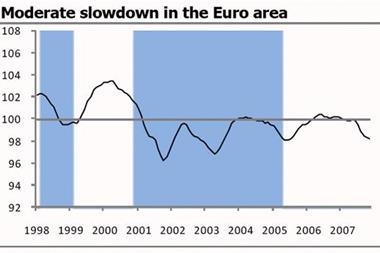Continuity threatened with supply chains at risk, says Aon
Companies operating in the food and beverage sector should be hedging against a difficult future, according to Aon Risk Services.
Volatile commodity prices are the latest symptom of a growing crisis facing food suppliers, distributors and governments, with the continued ability of global food production to meet rising demand becoming a burning issue. At the core of the problem are competing demands on supplies of wheat, rice, energy, water and land.
Peter Jackson, a director of Aon Risk Services, commented’Food companies have experienced 50 – 100% rises in the costs of their inputs in the past year or so. In particular, significant shortages have developed in the availability of milk powder, rice, wheat, glass, aluminium and PET (used to make plastic bottles and containers).
‘Companies need to be hedging against the future in one way or another, and it is about more than just the cost of inputs – it is about the very real prospect of being unable to source materials and supply at all. Does a food or beverage firm’s Business Interruption policy cover them against non-availability of supply of essential raw materials?’
‘People may think these are scare stories, but the price of rice has tripled this year to $1,000 per tonne and global wheat stocks are at their lowest for 20 years. Last year we saw the so called ‘Tortilla riots’ in Mexico and only last week, the Bangladeshi government couldn’t buy any rice on the global markets. Not only does this create a more volatile social environment for many UK multinationals, but for food companies it also poses the very real threat that they can’t source essential raw materials at all. We are already getting reports from some clients that their normal sources of supply are switching to supplying the Chinese market.’
‘The food supply chain has globalised over the last decade such that these issues affect smaller UK food producers just as much as large multinationals. With fewer options and already narrow margins, as well as reduced consumer spending and tough retail conditions, there’s a very real possibility of increased business failure.’




















No comments yet